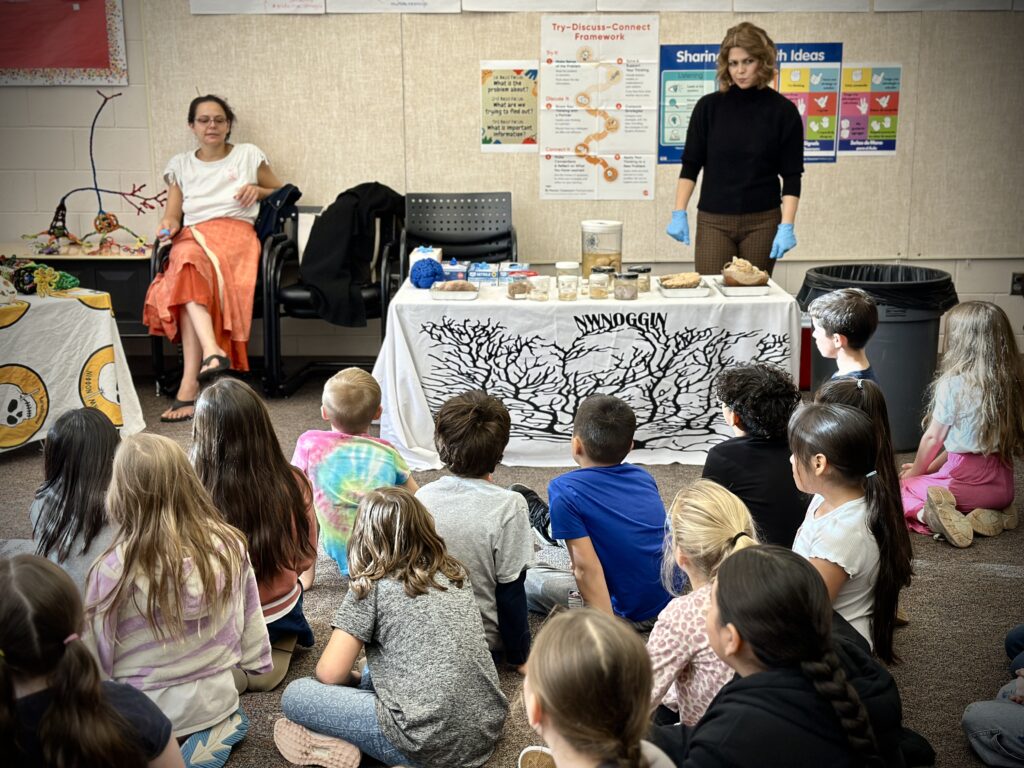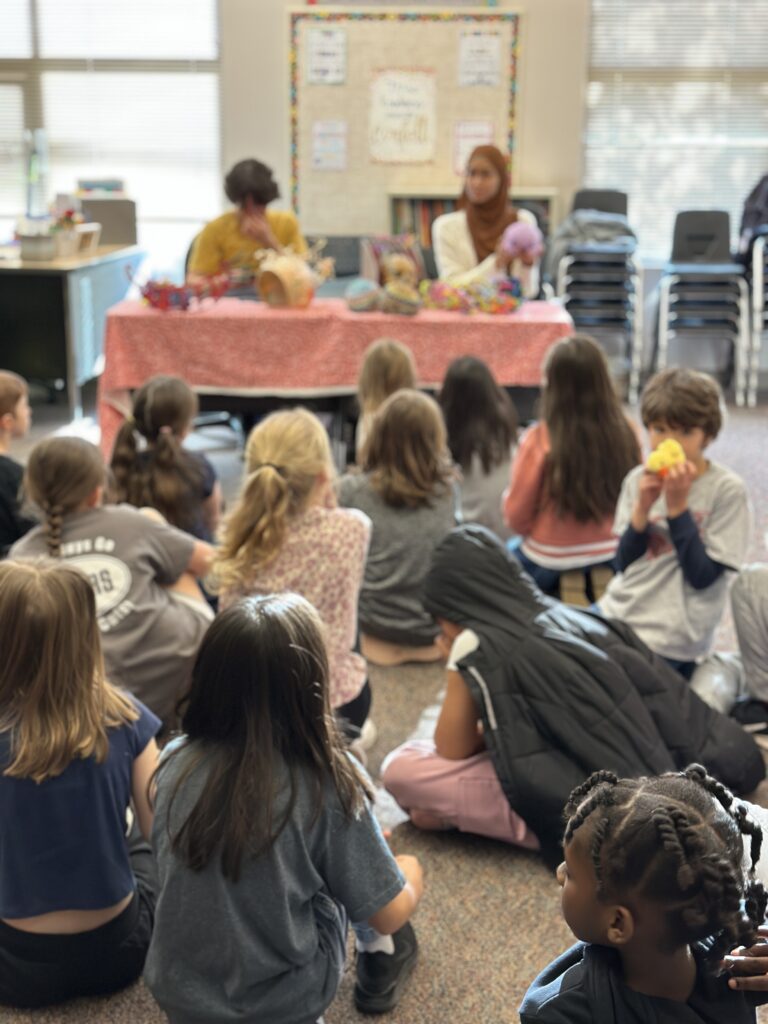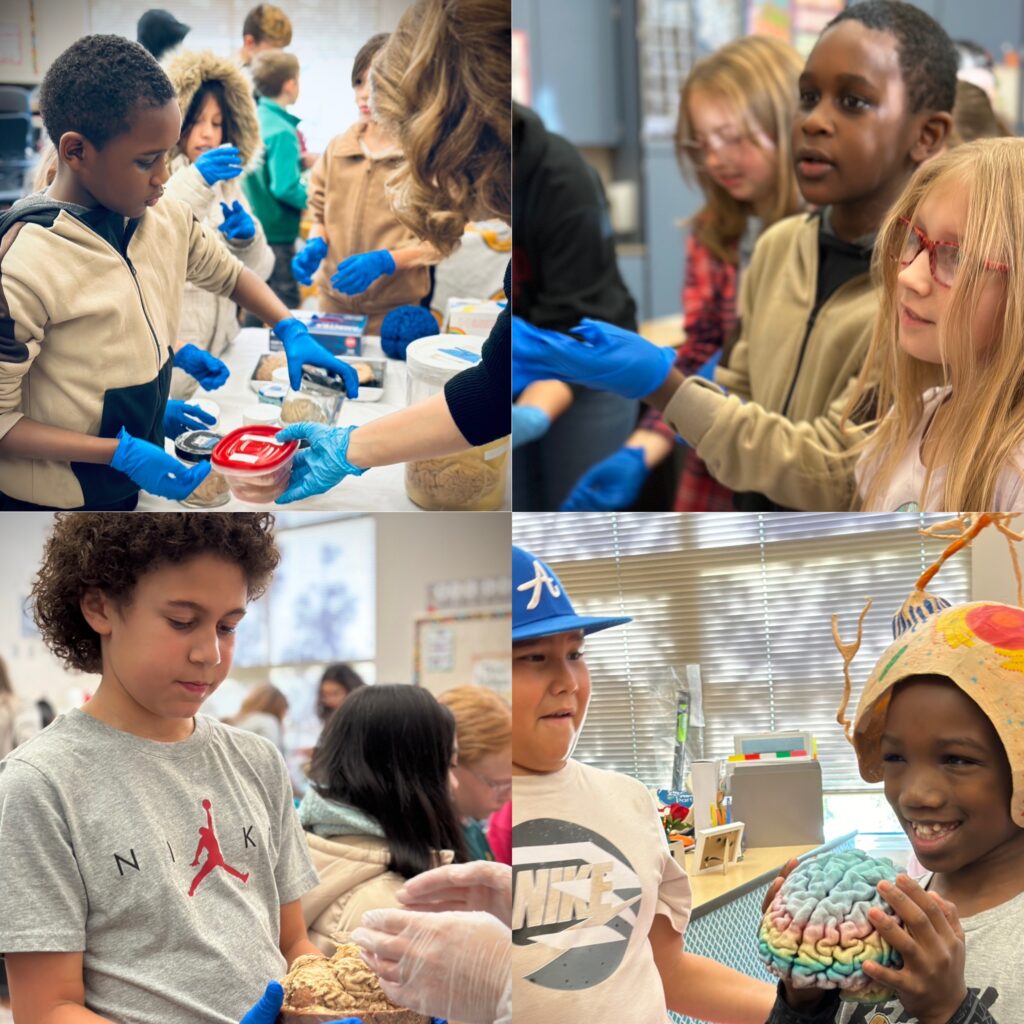Post by Yasaman Farhand, a graduate in Science and Interdisciplinary Neuroscience from Portland State University. Yasaman has contributed to multiple outreach visits to K-12 public classrooms and at the annual NogginFest through nwnoggin.org. She is the mother of a 3rd grader in Tigard-Tualatin Public Schools in Tigard, Oregon.

It was an honor to host the NW Noggin outreach group at Alberta Rider Elementary School.

As a former student of Dr. Bill Griesar and Jeff Leake at Portland State University, I have had the privilege of volunteering in their incredibly unique neuroscience outreach program that integrates with art to teach children about the brain and its functions.

READ POST BY YASAMAN: “Branches of the same tree”
As a mother of a 3rd grader I was very passionate to invite this amazing group to my child’s school and I am very happy that all the 3rd and 4th graders at Alberta Rider experienced this once in a lifetime opportunity.

The students entered the room one class at a time. Each session started with a round of introduction of Dr. Griesar and Professor Leake’s students, such as myself, who were (along with Bill and Jeff) volunteering for the event.


Jeff, Bill and myself were joined this morning by Maha Mukhtar, Alyssa Showalter, Gabe Guarin, Jennifer Logan and Becky Callos from Interdisciplinary Neuroscience at PSU, and Angela Hendrix, a long time volunteer with Northwest Noggin!




Most of the students were excited to touch a real human brain and learn about it. They also had some amazing questions such as where do we get the brains from or can we eat our own brain.

Where do we get the brains from?
Do we have any football player brains up here? Are their brains different?
Can you eat your own brain?
Do we have wires in our brain?
How do you make brain cells?
How big is a brain for kids, teens, and adults?
Can you live with your brain upside down in your head?
How do you know that that is what a neuron looks like?
What happens to your rods and cones if you are colorblind?


I had some great conversations with students regarding how in my Persian culture people actually eat some animal brains such as sheep and cow brains which they found to be bizarre.

I also explained that I plan to be a neurologist, a field with a long history in the region of my birth. People all over the world have been fascinated by the brain for a very long time!
“Throughout history, Persia was one of the prominent academic centers in various scientific fields including medicine, astronomy, mathematics, and philosophy…”
― Shri Kant Mishra et al

LEARN MORE: Historical perspective of neurology in Iran
LEARN MORE: Iranians’ contribution to world literature on neuroscience
LEARN MORE: Contribution of Iranian researchers in Alzheimer’s disease research
LEARN MORE: Kaleh Pacheh Recipe
“Are grown ups more boring?” was one of the very interesting questions that one of the students asked, and my answer was that I believe most of us are.

“I don’t ever want to grow up. That’s boring.”
―Quincy Jones
However Dr. Griesar’s answer to that question was more scientific than mine. Professor Griesar explained how children’s brains contain way more neurons (more than 150 billion!) than adult brains (which reduces to about 86 billion neurons), and they are more “plastic” and quick to change based on new experience. That’s why children can learn new things such as language or music faster than adults. They also lack the expectations and biases that adults have acquired during their own development, and are busy adapting their rapidly changing brain networks to the world that they inhabit now.

In that sense grown ups could be more boring!

LEARN MORE: Brain Development and the Role of Experience in the Early Years
LEARN MORE: The Developing Brain
I later explained what different parts of neurons look like and how they communicate in our bodies through chemical and electrical means, while Dr. Griesar and Professor Leake held up two neuron models which they made with pipe cleaners earlier to demonstrate it.

Part of the learning process is teaching children about constituent parts of the neurons by making them out of pipe cleaners which is one of the most fun activities that students just love.

MAKE YOUR OWN: Pipe Cleaner Brain Cells!
But to me the most fascinating table of all – my own favorite station – is the actual real human brains and different animal brains that students get to touch and explore. The reactions of the kids are absolutely priceless and that’s what I love the most about this program.



“Imagine what a harmonious world it could be if every single person, both young and old shared a little of what he is good at doing.”
―Quincy Jones
The fascination and the hands-on experience that children get to have in this learning experience is unique, touching, and effective. I truly appreciate Dr. Griesar, Professor Leake and their Northwest Noggin team for this phenomenal opportunity.


